Best Backpacking Stove Systems 2024 Fast Light Efficient
Last Updated: March 23, 2024
A paradigm shift in what makes the best backpacking stove system
A new paradigm has emerged in the backpacking stove landscape, and the performance bar is higher than ever. The optimal system now combines a heat exchanger pot with a wind-resistant and pressure-regulated burner. Together they offer lightning fast boil times, exceptional fuel economy, low weight, and unhindered performance in cold and wind. We call this combo a SuperStove, and if you don’t have one, it’s time to upgrade.
Buyer beware – the marketplace and has not caught up yet. Many brands are still producing and marketing old school systems that are either heavy, bulky, expensive, lack heat exchangers, or are impractically ultralight and incapable of boiling water in cold and wind. A quick meta-study of other “expert” gear reviewers indicates that this buyer’s guide is the only literature at the cutting edge of backpacking stove technology. So read on…
Our assessments are grounded in a combination of hands-on field experience, and backed up by controlled performance boil speed and fuel-usage testing in simulated real world shoulder-season and year-round mountain morning conditions (35F, 5 mph wind) — conditions we feel all stoves should perform well in. In summary, we’re absolutely confident in our recommendations: for most backpackers a SuperStove is the best stove for all of their trips.
While you’re here, don’t miss our comprehensive guide to SuperStoves, backpacking pots, backpacking food, freeze dried meals, long handle spoons, mugs, and water filters.
You make Adventure Alan & Co possible. When purchasing through links on our site, we may earn an affiliate commission at no additional cost to you. Here’s why you can trust us.
Best Backpacking Stove System
- Best Buy: SuperStove (MSR Pocket Rocket Deluxe + Olicamp XTS)
- Editor’s Choice: FrankenStove (MSR Pocket Rocket Deluxe + Jetboil Stash Pot)
- Best Ultralight All-In-One: Jetboil Stash
- Best All-Weather, All-In-One: Jetboil MiniMo
- Best Alcohol: Trail Designs Sidewinder Ti-Tri Caldera
Best Backpacking Stove Components
- Best Burner 2-way tie (Also Editor’s Choice): MSR Pocket Rocket Deluxe
- Best Burner 2-way tie (Also Best Value): Soto WindMaster
- Best Buy Pot: Olicamp XTS
- Editor’s Choice Pot: Jetboil Stash Pot
- Best Titanium Pot: TOAKS Titanium D115
Best Backpacking Stove System Comparison Table
Mobile users rotate device for full width table view
| Make/Model | Price ($) | Weight (oz) | Heat Exchanger | Pressure Reg | Ignitor | Capacity (L) | Boil time 35F (sec) | Fuel per boil 35F (g) | Boil time 35F, 5mph wind (sec) |
Fuel per boil 35F, 5mph wind (g)
|
| SuperStove ** | 118 | 10.2 | yes | yes | yes | 1.0 | 1.8 | 6.5 | 2.2 | 7.5 |
| FrankenStove *** | 235 | 8.5 | yes | yes | yes | 0.8 | 1.5 | 5.8 | 1.6 | 6.2 |
| Jetboil Stash | 150 | 7.1 | yes | no | no | 0.8 | 4.0 | 5.2 | ∞* | ∞* |
| Jetboil MiniMo | 170 | 14.6 | yes | yes | yes | 1.0 | 2.0 | 5.7 | 4.0 | 7.9 |
| TD Caldera | 80 | 6.4 | yes | n/a | no | 0.9 | 8.3 | 14.4 | 10.0 | 17.6 |
- *Incapable of heating water to boiling point on full heat output, given infinite time, 35F temps, and 5 mph wind
- ** Combines MSR Pocket Rocket Deluxe burner with Olicamp XTS Pot
- *** Combines MSR Pocket Rocket Deluxe burner with Jetboil Stash Pot
Backpacking Stove Comparative Testing
In addition to extensive backcountry experience with SuperStoves, we tested competing stoves with simulated real world conditions (i.e. a coolish morning with light winds that might commonly occur in a mountain camp), and recorded results against many other stove systems. See more on our testing methodology below.
No Boil Zone: The following stoves were unable to boil water. JetBoil Flash unable to stay lit. These stoves reached steady state temps as follows — BRS 3000 only reached 52 F! ETEKCITY 95 F. JetBoil Stash 160F. Pocket Rocket Kit 190F
Best Backpacking Stove Systems
SuperStove
SuperStove is our nickname for the combination of any pressure-regulated, wind-resistant burner (MSR Pocket Rocket Deluxe or Soto WindMaster) with a top tier heat exchanger pot (such as Olicamp XTS), which create an extremely efficient system that outperforms 99.99% of competing stoves. A SuperStove boils water lightning fast, uses fuel hyper-efficiently, and is hardly affected by cold or wind. What’s more, you get all of that for just over $100 – a dead average pricetag for a complete stove system setup! Nothing else comes close in terms of performance or value. Learn SuperStoves in our comprehensive guide.
- Price: $118
- Weight: 10.2 oz (Olicamp XTS Pot, lid, MSR Pocket Rocket Deluxe, stove bag)
- Heat Exchanger: yes
- Pressure Regulator: yes
- Ignitor: yes
- Capacity: 1,000ml
- BTU Output: 10,400
- Tested .5L Boil Time, 35F: not tested
- Tested .5L Boil Fuel Use, 35F: not tested
- Tested .5L Boil Time, 35F 5mph wind: 2.0 min
- Tested .5L Boil Fuel-Use, 35F 5mph Wind: 8.0 g
- Pros: Optimal system. Very fast boil time. Very fuel efficient time. Performs excellently in cold wind. Great value. Perfect size.
- Cons: Lighter and less bulky options exist. Marginally inferior only to FrankenStove.
Construction & Features
Starting from the bottom – our go-to SuperStove heats with an MSR Pocket Rocket Deluxe. This burner is pressure regulated for performance in cold, features a cupped burner head design to prevent wind from blowing the flame out/away, and includes a built-in piezoelectric ignitor to speed up the cooking process. The MSR PRD’s arms fold away neatly when not in use, and the entire design feels well-made and long-lasting.
What makes the aluminum Olicamp XTS Pot special is that it’s designed with a heat exchanger base. This corrugated ring speeds up boil time by concentrating heat, decreases fuel use, and resists wind. The 1L chassis is a perfect volume capacity for 1-2 people, and cleanly nests small or medium sized fuel canisters. At 6.7, it’s not the lightest option, but you will recoup that weight via improved fuel economy. And for just $33, it’s an absolutely killer buy.
One way to crank the value proposition even higher is by substituting out the MSR Pocker Rocket Deluxe for a Soto WindMaster burner. This saves $15, offers approximately the same boil time and fuel economy, but adds a microdose of extra gear fiddling every time you want to set up the stove.
Verdict
The fact that SuperStove outperforms virtually all other systems on boil time, fuel economy, and weather resistance makes its modest ~$100 price tag an absolute value slam dunk. We earnestly believe that 99% of backpackers should choose a SuperStove 99% of the time.
FrankenStove
FrankenStove combines the MSR Pocket Rocket Deluxe Burner with a Jetboil Stash Pot to create the most optimal SuperStove possible, and the most effective backpacking stove to ever hit the backcountry. No other system boils water faster, few best its fuel economy, and FrankenStove even outperforms mountaineering-specific designs in cold, windy weather. It is marginally more effective than our default SuperStove configuration, but costs more than twice as much. Learn SuperStoves in our comprehensive guide.
- Price: $235
- Weight: 8.5 oz (Pot, lid, stove, stove bag)
- Heat Exchanger: yes
- Pressure Regulator: yes
- Ignitor: yes
- Capacity: 800 ml
- BTU Output: 10,400
- Tested .5L Boil Time, 35F: 1.7 min
- Tested .5L Boil Fuel Use, 35F: 5.8g
- Tested .5L Boil Time, 35F 5mph wind: 1.6 min
- Tested .5L Boil Fuel Use, 35F 5mph Wind: 6.2 g
- Pros: Fastest boil time. Excellent fuel economy. Lightweight and packable. Best performance in cold/wind. Rattle-proof.
- Cons: Hazardous burner-pot combo according to manufacturer. Very expensive. Mainly for boiling, cooking requires great care. Only fits small canisters.
Construction & Features
The idea for FrankenStove was born on a whim out of obsessive testing and gear-hacker curiosity. Running each stove system through a gauntlet of cold/wind boil speed and fuel-usage tests, we determined that the MSR Pocket Rocket Deluxe Burner, in combination with the pot from Jetboil Stash, was the most effective combination possible in challenging real world conditions. Here’s why:
To begin with, MSR Pocket Rocket Deluxe is a truly exceptional burner with all of the right features. Its high BTU output boils extremely quickly without sacrificing much in the way of fuel economy. It is pressure regulated, maintaining performance in cold temperatures and with nearly-empty canisters. The cupped head prevents flame from immediately blowing sideways or out in strong wind. The convenience of a built-in pietzoelectric ignitor speeds up the cooking process. And its user-friendly arms fold out to offer a well-balanced pot platform. Basically, everything about this design feels thoughtful and well-made. While MSR PRD is our team’s favorite, we acknowledge it to be functionally equal to and interchangeable with Soto WindMaster, another exceptionally high performing burner.
As much as we love the MSR PRD, the 5.1 oz aluminum Stash Pot shines even brighter, and is even more best-in-class. This pot is truly unequaled, and further separated from its peer group in terms of performance above replacement level. It’s 31% lighter than the second best pot – Olicamp XTS, and yielded a slightly faster boil time and slightly better fuel economy when tested on the same burner. And that’s to say nothing of how much better it is than a minimalist titanium model (way, way, way better). On top of that, the Stash Pot nests a 110g fuel canister upside down in its lid, which prevents rattling and also holds a lighter. Jetboil Stash Pot is the best backpacking cookware to have ever been designed.
All that said, there are downsides. First and foremost, the Jetboil Stash Pot is only approved for safe use with the Jetboil Stash Burner, a low BTU output unit. While we have yet to see this, it’s theoretically possible that the relative 2X heat output of MSR Pocket Rocket Deluxe could damage the pot or the heat exchanger fins, and it definitely increases the likelihood of burning food on the bottom of the pot while cooking. See more in the safety warning below.
Furthermore, FrankenStove is very expensive. Assembling this combo requires purchasing the entire Stash System, only to chuck the burner and replace it with an MSR Pocket Rocket Deluxe. The only stove system more expensive than FrankenStove is the MSR Reactor. One final and minor downside is that the MSR PRD is just enough larger than the Stash Burner that it cannot fit nested inside the pot alongside a canister.
Safety Warning
The Jetboil Stash Pot was designed exclusively for use with the Jetboil Stash Burner. Using the Jetboil Stash Pot with any other burner is hazardous, voids the warranty, risks product damage due to overheating, and personal injury. Please read Jetboil Stash System User Manual for more information about proper and safe handling of this cooking system and other risks associated with operating the stove. Anyone using the Stash Pot in any way other than exactly as intended by Jetboil acknowledges the risks they are taking, and is wholly responsible for their own actions and safety. Please refer to our terms and conditions of service for more information about use of this website and the content therein.
Verdict
FrankenStove is lightweight, highly packable, fuel-efficient, and boils water faster than any other stove system. It is so effective in cold and wind that it even outperforms mountaineering all-in-one stoves. For all of the above reasons, FrankenStove is our editor’s choice award winner for being the most effective stove system possible. However, it is highly expensive, and combines two products that were not meant to be combined in a way that the manufacturer considers to be hazardous. Proceed with caution!
Jetboil Stash Cooking System
Ah Jetboil Stash Stove, the most compact, lightweight and efficient all-in-one cooking system for use in moderate, or fair weather conditions. This game changing stove systems delivers best-in-class packability and fuel economy, and comes with the all-time most efficient cookpot.
- Price: $150
- Weight: 7.1 oz (pot, lid, stove, stove bag)
- Heat Exchanger: yes
- Pressure Regulator: no
- Ignitor: no
- Capacity: 800 ml
- BTU Output: 4,500
- Tested .5L Boil Time, 35F: 4.0 min
- Tested .5L Boil Fuel-Use, 35F: 5.2 g
- Tested .5L Boil Time, 35F 5mph wind: unable to boil
- Tested .5L Boil Fuel-Use, 35F 5mph Wind: unable to boil
- Pros: Ultralight. Best fuel economy possible in fair weather. Packs down and nests very nicely. Best pot ever to be designed. Rattle-proof.
- Cons: Unable to boil in cold wind. Slow boil time. Not pressure regulated. Burner head not sufficiently cupped. Expensive. Only nests small fuel canisters.
Construction & Features
The Jetboil Stash Stove is an ultralight backpacker’s dream. The whole system weighs just over seven ounces, including stove, small fuel canister, and lighter. It packs down and nests in its own pot – all without rattling. In-use, Stash is something of a best-of-both-worlds hybrid between traditional Jetboil integrated systems (like the Flash) and standalone canister-top backpacking stove (like MSR Pocket Rocket).
What’s more Stash reigns supreme when it comes to fuel economy in wind-free conditions. Our half-liter boil test at 35F used a scant 5.2g of fuel with the average being somewhere around 8g. This is due in part to a boost from the pot’s heat exchanger base, but also the burner’s low BTU output. Lower BTU burners improves fuel efficiency at the cost of slower boil times. But in most scenarios, fuel economy is king, and we don’t mind waiting an extra minute or two.
The 5.1 oz aluminum pot is constructed with Jetboil’s signature Flux Ring heat exchanger. This technology blocks wind and concentrates heat, both of which yield faster boil times and superior fuel economy. What’s more, notches on the stove arms create a very secure perch for the pot to roost. The siliconized pot handle flips open and closes down overtop, locking the lid in place while stowed. The plastic lid is molded to nest an upside down fuel canister, locking it in place to prevent rattling. And finally, the gap between the underside of the canister and the lid holds a mini lighter in place. What an incredible design!
If Jetboil Stash has a weakness and/or opportunity for improvement, it would be performance in cold and wind. The burner unit is not pressure regulated, meaning heat output decreases as temperatures drop and/or the canister empties. What’s more, it does not have a sufficiently cupped burner head, allowing precious gas to drift off as soon as it becomes flame. Finally, the low BTU output means that the stove can’t be cranked up to compensate for cold weather/strong wind/high altitude. While perfectly sufficient for 90% of 3-season conditions, we would not recommend the Jetboil Stash System for use in shoulder season or if the forecast calls for cold and/or strong wind.
Verdict
Simply put, Jetboil Stash is the most economical stove possible when it comes to weight savings, packability, and fuel efficiency in moderate to fair weather usage. And it includes the best pot ever to have been designed. However, we recommend other backpacking stove systems for use in cold, windy, or otherwise challenging conditions. Read more in our full length review.
Jetboil MiniMo Cooking System
For use in cold, windy conditions, the Jetboil MiniMo is our all-in-one system of choice – though still slightly inferior to multi-component custom systems like a SuperStove. We’ve had great experiences cooking on MiniMo in Patagonia, famous for its intensely windy weather.
- Price: $170
- Weight: 14.6 oz (pot, lid, stove)
- Heat Exchanger: yes
- Pressure Regulator: yes
- Ignitor: yes
- Capacity: 1000 ml
- BTU Output: 6,000
- Wind Tolerance: High
- Tested .5L Boil Time, 35F 5mph Wind: 2.0 min
- Tested .5L Boil Fuel-Use, 35F 5mph Wind: 5.7 g
- Tested .5L Boil Time, 35F 5mph Wind: 4.0 min
- Tested .5L Boil Fuel-Use, 35F 5mph Wind: 7.9g
- Pros: Performs great in wind and cold. Fuel efficient. Comes with pot. Super stable — can’t knock pot of burner. Insulated koozie. Wide pot is easy to clean and eat out of. Reasonably fast boil.
- Cons: Heavy. Expensive. Bulky. Customized SuperStove systems perform slightly better.
Construction & Features
The Jetboil MiniMo is the best pre-made, all-in-one, fully integrated stove system for use in challenging weather. This is thanks to its pressure regulator, FluxRing heat exchanger, and overall excellent fuel economy.
Fully-integrated backpacking stoves are always bulkier and heavier than standalones or hybrids, which is why we only use them when necessary. That said, MiniMo does a good job of minimizing this downside. Everything packs down into the pot and the whole system weighs less than a pound. However, that is about twice as heavy as Jetboil Stash or and 50% heavier than a SuperStove.
The Jetboil pressure regulator is a critical benefit in that it allows the stove to perform in cold temperatures when others would falter and reduce heat output. The same is true when using a nearly empty canister. Pressure regulators are of huge benefit to stoves, and well worth a bit of extra weight and cost. Jetboil claims MiniMo can perform in temps down to 20.
In our testing, Jetboil MiniMo boiled water quickly and easily in cold windy, bested only by FrankenStove, SuperStove, and its slightly bulkier, heavier, and much more expensive peer – the MSR Reactor.
With MiniMo, you’re getting a conveniently short and wide 1L sized cook pot. It can even store a 230g fuel canister! It is wide and excellent for cooking and eating out of. However, if you will always be cooking solo and mostly not eating out of the pot, it might make sense to instead choose it’s slightly smaller sibling, the Jetboil MicroMo backpacking stove. MicroMo weighs two ounces less and has a narrower, 0.8L sized pot.
Verdict
The Jetboil MiniMo Stove is the best blend of price, effectiveness in cold/wind, weight/bulk minimization, and fuel economy among all-in-one system. That being said, it is too heavy to be considered for use as a daily driver, and slightly less effective than a SuperStove. But if you love an all-in-one, go for the MiniMo.
Trail Designs Sidewinder Ti-Tri Caldera
Thanks to its titanium heat trapping/wind blocking cone, the Trail Designs Sidewinder Ti-Tri is the most effective alcohol fuel stove available. It is a bit finicky to set up and much slower to boil than canister stoves, but lighter weight after factoring in fuel for use on shorter trips. The heat concentrating cone also yields faster boils times and better fuel economy than other alcohol stoves.
- Price: $80
- Trail Weight (full system with pot): 6.4 oz
- Includes: Stove, 900 ml Titanium Pot, Cone, Sleeve, Stakes, Empty Fuel Bottle
- Tested .5L Boil Time, 35F: 8.3 min
- Tested .5L Boil Fuel-Use, 35F: 14.4 g
- Tested .5L Boil Time, 35F, 5 mph wind: 10 minutes
- Tested .5L Boil Fuel-Use, 35F, 5 mph Wind: 17.6g
- Wind Tolerance: Moderate
- Pros: Ultralight. No metal fuel canister. Wind resistant. Stable. Pot Included. Alcohol fuel is cheap and easy to get.
- Cons: Very finicky setup. Slow boil time. Heavy liquid fuel.
Pros & cons of alcohol stoves
There are advantages and disadvantages when it comes to alcohol stoves, which we will summarize before diving into specifics of the Trail Designs Sidewinder Ti-Tri.
The primary advantage is that alcohol stoves do not require the 3.5 oz weight and bulk of a metal fuel canister, which immediately saves 2.7 oz compared to a 0.8 oz plastic alcohol fuel bottle. This alcohol stove system with fuel for 2-3 days weighs 9-10 oz, which is a few ounces lighter than a canister stove system with fuel for 2-3 days.
The disadvantages are significantly slower boil times, a more finnicky setup, and the fact that alcohol fuel itself is heavier than isobutane. This means that the relative savings from the canister are lost the more fuel you require. When factoring in fuel weight, alcohol stoves are only lighter on short trips. There is a transition point somewhere after the three day mark when canister stoves start to become the lighter weight system.
Construction & Features
The most noteworthy feature of this backpacking stove is the titanium Sidewinder Cone, which creates an effect similar to heat exchangers. Each cone is manufactured to match the exact dimensions of your pot which seals off gaps. This creates a nearly windproof air chamber that traps heat below the pot for increased heat efficiency. The pot itself sits atop two stakes running perpendicular to the cone. It’s a bit of a chore to set up, but easy once you get the hang of it.
The Kojin alcohol stove is reminiscent of cat food cans of yore, only filled with a spongy material to prevent flaming alcohol from spilling if it were knocked over. If you’ve ever knocked over a flaming cat can before, you know how important this is. Put the lid on to snuff the flame and save excess fuel.
Verdict
The Trail Designs Sidewinder Ti-Tri is far and away the best alcohol stove, but alcohol stoves in general have mostly been edged out by increasingly efficient and more user-friendly canister-based backpacking stoves. As such, we only recommend this to ultralight alcohol stove buffs, and/or those looking to carry the least possible weight on short trips.
Best Backpacking Stove Components
MSR Pocket Rocket Deluxe
The MSR Pocket Rocket Deluxe is our preferred stove burner. It is fully featured, beautifully made, highly effective in both testing and the backcountry, and has only one equal on the market – Soto WindMaster.
- Price: $85
- Stove Weight: 2.9 oz
- BTUs: 10,400
- Pietzo Ignitor: Yes
- Pressure Regulator: Yes
- Wind Tolerance: High
- Pros: Lightweight. Fast boil. Good fuel economy. Wind resistant. Pressure Regulated. Good arms. Ignitor. High BTU output.
- Cons: Expensive. Slightly lighter and more fuel efficient models exist.
Construction & Features
To begin with, MSR Pocket Rocket Deluxe is a truly exceptional burner with all of the right features. Its high BTU output boils extremely quickly without sacrificing much in the way of fuel economy. If you want to save fuel, use it at 25-50% output.
It is pressure regulated, maintaining performance in cold temperatures and with nearly-empty canisters. The cupped head prevents flame from immediately blowing sideways or out in strong wind. The convenience of a built-in piezoelectric ignitor makes the cooking process even faster. And the user-friendly arms fold out to offer a ridged, well-balanced pot platform. Basically, everything about this design feels thoughtful and well-made.
While MSR PRD is our team’s favorite, we acknowledge it to be functionally equal to Soto WindMaster, another exceptionally high performing burner.
Verdict
MSR Pocket Rocket Deluxe is one of the two best backpacking stove burners. It has all of the right features, and exceptional backcountry performance in all conditions, and is our current go-to.
Soto WindMaster
The Soto WindMaster is one of the two best backpacking stove burners. It is highly rated, extremely effective in all weather, and built with all of the right features. Its performance rivals our staff pick MSR Pocket Rocket Deluxe in virtually every way, but is a bit cheaper and there are some minor differences.
- Price: $70
- Stove Weight: 3.1 oz (with 4-Flex arms)
- BTUs: 11,000
- Pietzo Ignitor: Yes
- Pressure Regulator: Yes
- Wind Tolerance: High
- Pros: Lightweight. Fast boil. Good fuel economy. Wind resistant. Good arm balance. Good value.
- Cons: Somewhat finnicky stove arms. Slightly lighter and more fuel efficient models exist.
Construction & Features
Like the MSR PRD, Soto Wind Master has all of the right features and delivers exceptional backcountry performance. Its fuel pressure regulator improves performance in cold, and allows the stove to continue operating at near max until empty. The high BTU output yields exceptionally fast boil times in all conditions, and can also be cranked back when you wish to prioritize fuel economy over speed.
Its namesake wind mastery is due to the cupped burner head (since replicated by MSR PRD), which prevents the flame from being blown out and heat from drifting away. SWM also features a piezoelectric ignitor which further speeds up the start-to-finish cooking process.
Apart from being $15 less expensive than MSR PRD, where this design differs most is the modular arm system. In storage, the arms fold away and separate from the stove body. This makes it a bit easier to store, but a bit more work to assemble for use at camp. Two options are available, known as 4-Flex, and TriFlex.
Verdict
Soto WindMaster is one of the two best backpacking stove burners, has all of the right features, and exceptional backcountry performance in all conditions, and is equal in virtually every way to our top pick, the MSR Pocket Rocket Deluxe.
Olicamp XTS Pot
The Olicamp XTS is the best standalone pot, and easily the best buy. For just $33, it’s a killer deal on a great product that isn’t even strictly worse than our editor’s choice pick (Jetboil Stash) if you prefer the extra volume and/or don’t want to ignore manufacturer burner-compatibility instructions. Olicamp XTS features a heat exchanger ring for added wind resistance and heat transfer, siliconized handle grips, and it can even nest a full eight oz fuel canister. This a great pot for a great price. Biggest downside is the weight and bulk. At 6.7 ounces, it’s just barely lightweight. But everything else about it gets an A grade.
- Price: $33
- Weight: 6.7 oz
- Volume: 1000 ml
- Material: Aluminum
- Nests: 8 oz fuel canister
- Features: Heat exchanger ring. Siliconized handle. Lid with pour hole and snap fit.
- Pros: Very affordable. Heat exchanger increases stove’s fuel efficiency and wind resistance. Thermally efficient. Perfect size. Nests medium canisters.
- Cons: Upper end of lightweight. Bulkier than average. Lid could be better/more secure.
Jetboil Stash Pot
Choose the backpacking pot from the Jetboil Stash System because it offers the best blend backcountry performance, weight minimization, features, wind-resistance, and decreased boil time. Thanks to the heat exchanger ring affixed to its base, Stash is one of the only pots that actually increases your stove’s fuel economy and wind resistance. While slightly heavier than its titanium peers, the aluminum chassis performs better when it comes to heat transfer from flame to water. What’s more, you get a siliconized handle that flips up to secure the lid in place. And when nested, the pot lid holds a four ounce fuel canister and lighter without rattling around.
However, there are downsides. First and foremost, Jetboil only sells this unit as a pot-stove combo package; while the pot is best-in-class, the stove unit is only highly effective in moderate to fair weather. If you already have a top tier stove, like our top pick the Pocket Rocket Deluxe, acquiring the Stash Pot means wasting money on a stove you don’t need or want. What’s more, due to its aluminum construction and the added weight of a heat exchanger, Stash pot weighs about 20% more than a minimalist titanium pot. Also, it’s so effective at heat transfer that Stash pot increases the likelihood of burning food on the bottom inside if used for cooking, rather than just boiling water. Lastly, at 800 ml, it’s just a smidge smaller than our preferred 1L bullseye, but still within the healthy range for 1-2p.
Safety Warning: The Jetboil Stash Pot was designed exclusively for use with the Jetboil Stash Burner. Using the Jetboil Stash Pot with any other burner is hazardous, voids the warranty, risks product damage due to overheating, and personal injury. Please read Jetboil Stash System User Manual for more information about proper and safe handling. You are responsible for your own safety.
- Price: $150
- Weight: 5.1
- Volume: 800 ml
- Material: Aluminum
- Features: Heat exchanger base ring, siliconized handle, fuel canister and lighter nesting lid. Lid with pour hole and snap fit.
- Nests: 4 oz fuel canister
- Pros: Lightweight. Increases stove’s fuel efficiency and wind resistance. Nests beautifully. Thermally efficient. Quiet and does not rattle.
- Cons: Requires purchasing expensive stove/pot bundle. Aluminum is heavier than titanium. A bit small. Better for boiling water than cooking food.
TOAKS Titanium D115
The TOAKS Titanium D115 is our top overall pick titanium pot because it offers the best blend of low weight, low price, and high user reviews. This is what we bring if we aren’t using a heat exchanger model, though that rarely ever happens.
- Price: $45
- Weight: 4.0
- Volume: 900 ml
- Material: Titanium
- Features: Fold out handle.
- Nests: 8 oz fuel canister
- Pros: Ultralight. Highly rated. Simple. Affordable. Effective. Extended handles.
- Cons: Insecure lid. Lid grip is not siliconized. Handles can get hot. Storage bag sheds fiber.
Construction & Features
It is minimalist and simple, yet highly effective. Perhaps the only thing we’d change is siliconizing its handles and lid grip. But aside from that, TOAKS knocked this one out of the park. Such a classic ultralight pot!
Note, the namesake D115 refers to the pot’s diameter in millimeters. The 130mm diameter version used to be more popular, but always earned significantly lower user reviews due to flimsier walls (larger diameter circles are less structurally sound) and very few retailers still stock it. That said, we actually preferred the wider version for being easier to eat out of and clean, and having better heat transfer. But the people have voted with their dollars and prefer the D115. So we recommend it here.
Verdict
While we now prefer aluminum heat exchanger pots over minimalist titanium designs due to the way in which they improve boil time and fuel economy, TOAKS D115 is the best titanium option. It is a great ultralight pot to choose for short trips when fuel savings won’t surpass the weight differential between an aluminum pot vs a titanium pot.
Best Backpacking Stove Pro Tips & Buyer Info
What is a SuperStove?
A SuperStove is the combination of a heat exchanger pot (e.g. Olicamp XTS), with a wind resistant (cupped head) and pressure regulated burner (e.g. MSR Pocket Rocket Deluxe). A SuperStove outperforms all other stove types in all conditions by a large margin. Key performance improvements are 1) it has exceptionally fast boil times, 2) is highly fuel efficient, and most importantly 3) cold and wind have very little effect on its measurable performance (boil times and fuel efficiency). The vast majority of conventional backcountry stoves choke in cold and wind — many not able to boil water at all. Learn more about SuperStoves in our comprehensive guide.
Criteria For Choosing A Backpacking Stove Burner
- Fuel Efficient (very important)
- Weighs 2-3 oz (very important)
- At least 3 arms, fold down for storage (very important)
- Pressure Regulated (very important in cold)
- Cupper burner head (very important in wind)
- Boils Quickly (important)
- High BTU output (important)
- Output ranging from simmer to full blast (important for cooking)
- Titanium construction (nice to have)
- Piezoelectric Ignitor (nice to have)
- Four arms (nice to have)
How To Choose A Backpacking Pot For Your Backpacking Stove
What follows are our recommendations for choosing a pot to pair with your stove. See more in our guide to the best backpacking pots.
- Approximate capacity of 0.8-1.0 liters, best all-around size for 1-2 backpackers
- Weighs 4-7 oz, nests fuel canister, fold-out handle, siliconized grip
- First Choice: aluminum body with heat exchanger. Improves boil time, fuel economy, blocks wind. Best all around
- Second Choice: titanium body minimizes weight, maximizes durability. Best for very short, fair weather trips
- Third Choice: aluminum body, no heat exchanger, 1.3L. Best for in-pot gourmet cooking for 2P, least likely to burn food
Cold Weather Usage Tips For Isobutane Fuel Canisters
When you see canister fuel advertised as “4 season,” take it with a grain of salt. There is no way to get around vapor pressure, and pressure regulated stoves can only do so much. This kind of fuel may have slightly higher propane levels that will burn off first, but it is not cold-resistant. When it’s cold, the best way to burn your fuel most efficiently in the backcountry is to baby it.
When walking all day, store the fuel canister up against your lumbar in your pack. This way, your body temperature can trap some heat inside your pack and help keep the canister warmer. Don’t store it in any external or pockets. As soon as you arrive in camp, put your canister in your puffy jacket or another insulating layer to warm it up before cooking. When it comes time to cook, put the fuel canister in shallow, 32+ degree water to keep the temperature right at freezing. You’ll get optimal performance and efficiency this way.
At bedtime, slip the fuel canister into your sleeping bag. It might not be the most comfortable snuggle buddy, but it will save you time heating up water for your morning coffee or tea. Create or find your own windscreen to protect the burner from wind — e.g. shelter the stove behind natural objects, such as logs and rocks. But be very careful not to contain/concentrate heat around the stove’s fuel canister, e.g. a ring of aluminum foil. That’s a big safety hazard and all stove manufacturers have huge warnings NOT to do this.
Liquid Feed, Inverted Canister Backpacking Stove Systems
In really cold conditions, an inverted feed stove like this Soto Fusion Trek performs wonderfully. The inverted liquid feed takes vapor pressure out of the equation, and because the burner is separated from the pot by a feed line, you can put a full windscreen around the burner without risk of overheating the canister.
Pot Size Relative to Group Size
For optimal group camping, we find it best to have one complete stove system for every two backpackers. This speeds up the cooking process when everyone is hungry at dinner time, adds redundancy, and reduces collective gear bulk (in the sense that it’s more space-efficient to pack two 1L pots than one 2L pot). However, some situations may require deviating from this logic, such as complex menus, odd numbered groups, or a disproportionate ratio of children to adults.
Recommended pot size relative to group size
- 800 ml capacity – Optimal for 1p-use, acceptable for 2p-use
- 1000 ml capacity – Optimal for mixed 1-2p use
- 1300 ml capacity – Optimal for exactly 2p use
- 2000 ml capacity – Optimal for 3-4p use*
*Better to bring two stoves and two 1L pots, but some situations/group dynamics/menus may warrant a larger pot.
Titanium Pot vs Aluminum Pot For Use With A Backpacking Stove
Both materials have their merits, and neither is strictly better than the other.
- Pros of aluminum: Accommodates heat exchanger base. Lightweight. Durable. Affordable. Good heat transfer. Even heat distribution. Better for cooking. Our first choice.
- Cons of aluminum: Heavier and less durable than titanium – but still light and durable in the grand scheme of things.
- Pros of titanium: Ultralight. Very Durable.
- Cons of titanium: Does not accommodate heat exchanger base. Expensive. Poor heat transfer, uneven heat distribution. Our second choice.
Aluminum Pot with Heat Exchanger vs Titanium Pot Without Heat Exchanger
In cold and windy weather, we always recommend bringing a pot with a heat exchanger base. However, in warm, calm, and otherwise fair conditions, the weight savings of a minimalist ultralight titanium pot could be more advantageous and desirable than the thermal efficiency of an aluminum heat exchanger base pot. Based on our testing, a heat exchanger base saves 0.2 oz of fuel for each pint of water boiled compared to a minimalist titanium pot. So depending on the length of your trip and how much cooking you intend to do, a heavier pot with heat exchanger could save weight, even if the pot body is 2-3 ounces heavier to start with. But for short trips (2-3 days) in fair weather, an ultralight titanium pot is slightly more weight efficient even after accounting for reduced fuel economy.
Best Backpacking Stove Test Data & Methodology
In addition to extensive experience testing stoves in the backcountry, we also tested them in a controlled environment at home which simulated challenging real world conditions. We used the following methodology:
- Outside in 35F/1.5C temperatures
- Tested with and without 5 mph wind made by box fan, measured with an anemometer
- At sea level
- Stoves turned to max heat output
- Boiling 16 oz/.5L of water
- Measured time to reach 212F/100C, same thermometer each time.
- Weighed fuel canister before and after each boil test to record fuel expenditure. Scale accurate to 0.01 g.
Note: FrankenStove’s measured boil time decreased in wind test due to minor variances in real world testing, margin of error, decimal rounding, and FrankenStove’s inherently excellent wind resistance.
No Boil Zone: The following stoves were unable to boil water. JetBoil Flash unable to stay lit. These stoves reached steady state temps as follows — BRS 3000 only reached 52 F! ETEKCITY 95 F. JetBoil Stash 160F. Pocket Rocket Kit 190F
Best Backpacking Stove Conclusion
Thank you for reading this guide to the best backpacking stove, where we hope you found your next backcountry cooking system. We’re absolutely confident that we have identified the best and most efficient stoves on the market for boiling water and basic food prep. In summary, we recommend assembling a SuperStove, which means pairing a heat exchanger pot with a pressure regulated, cupped-head burner for optimal fuel economy, boil time, and weather-resistance. Happy hiking, happy camping, and bon apetite!

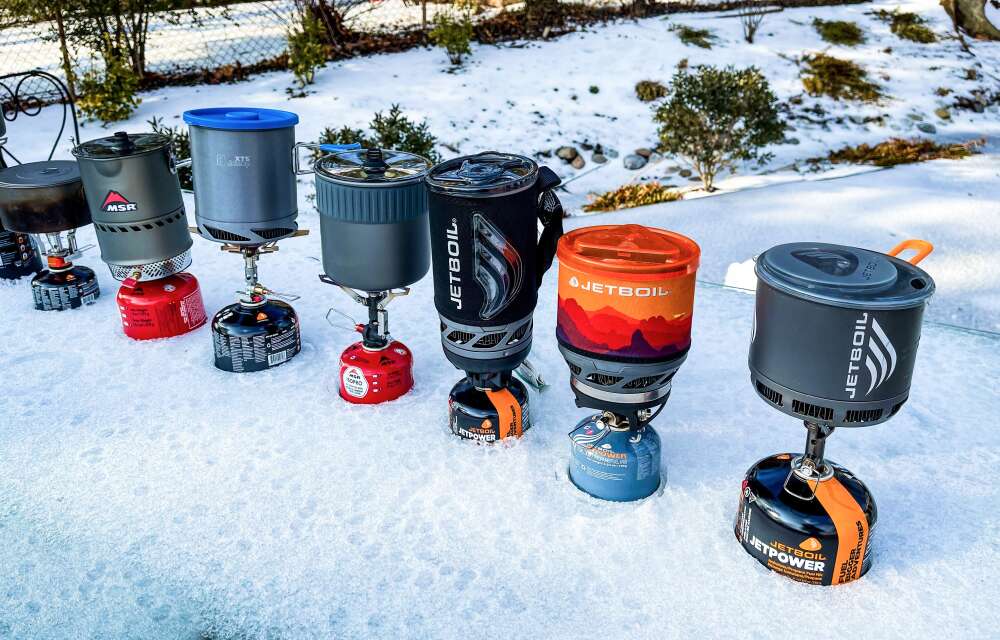
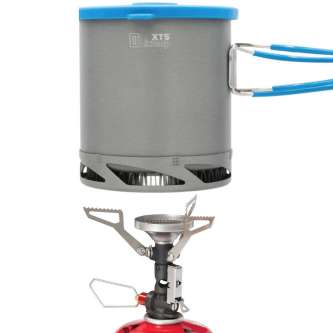
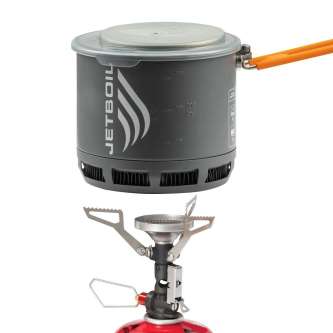
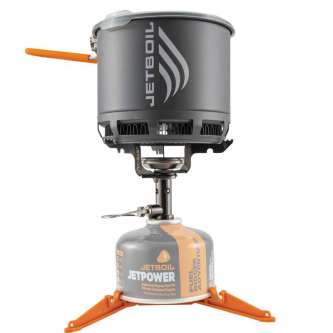
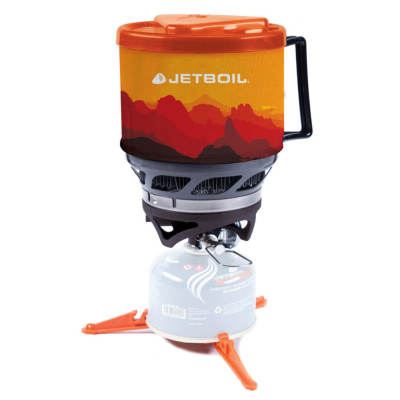
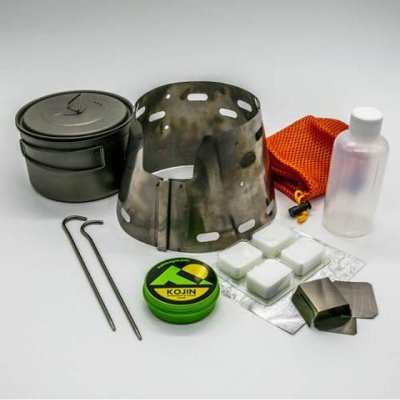
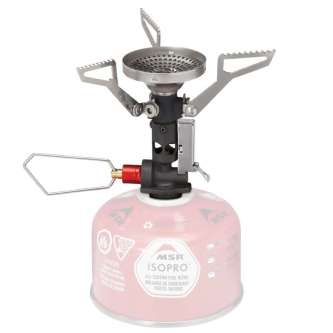
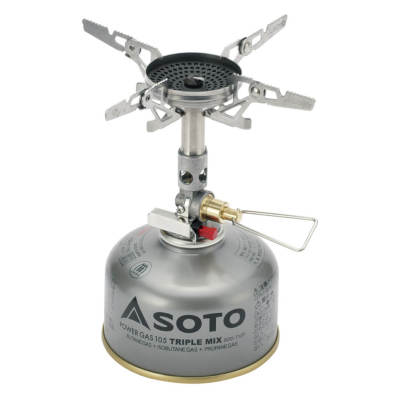
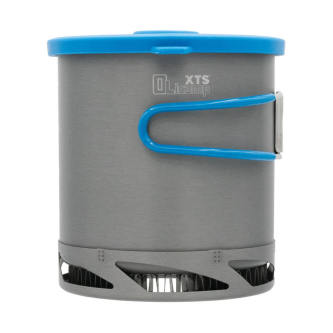
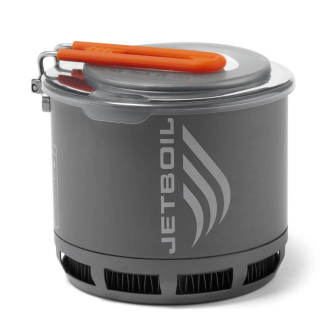
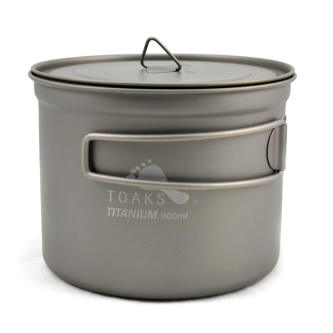
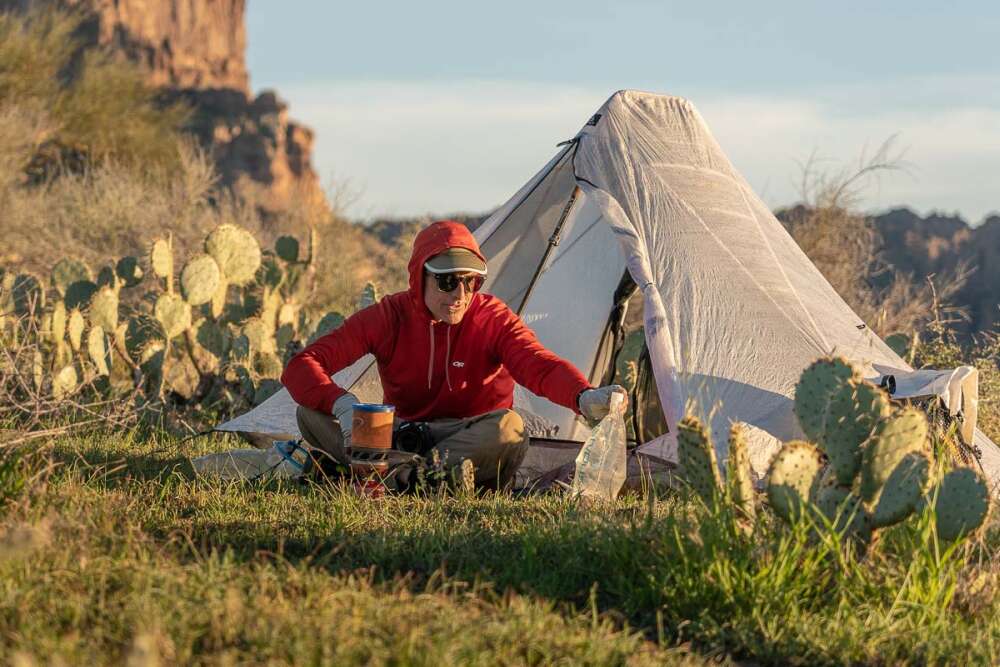
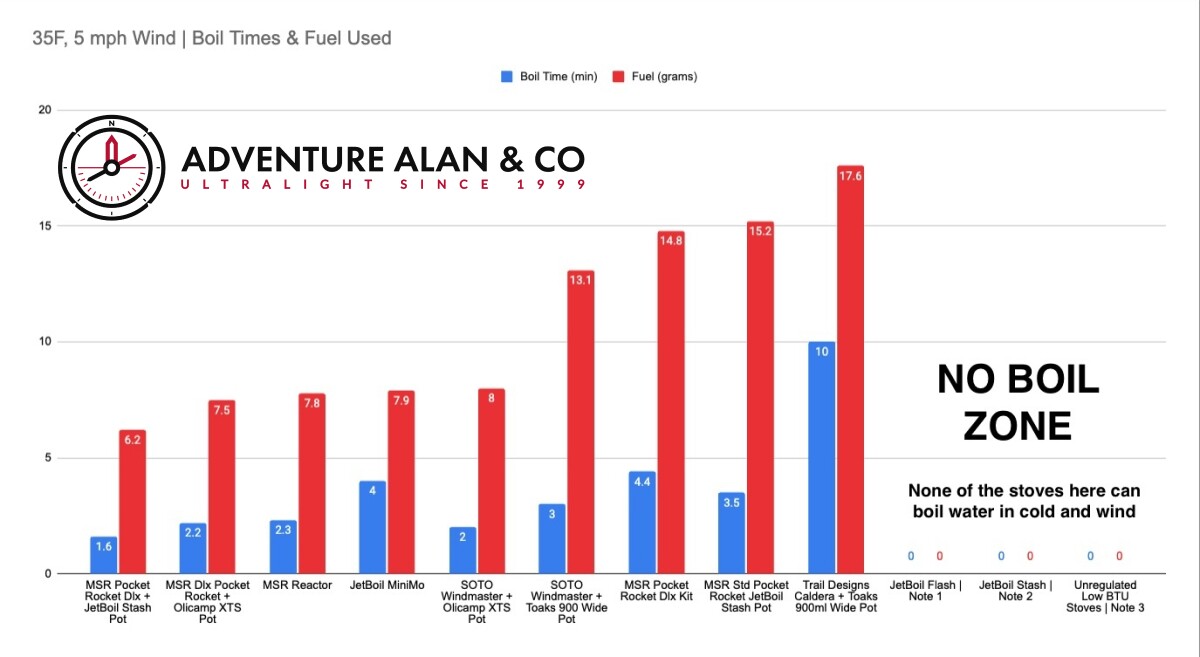
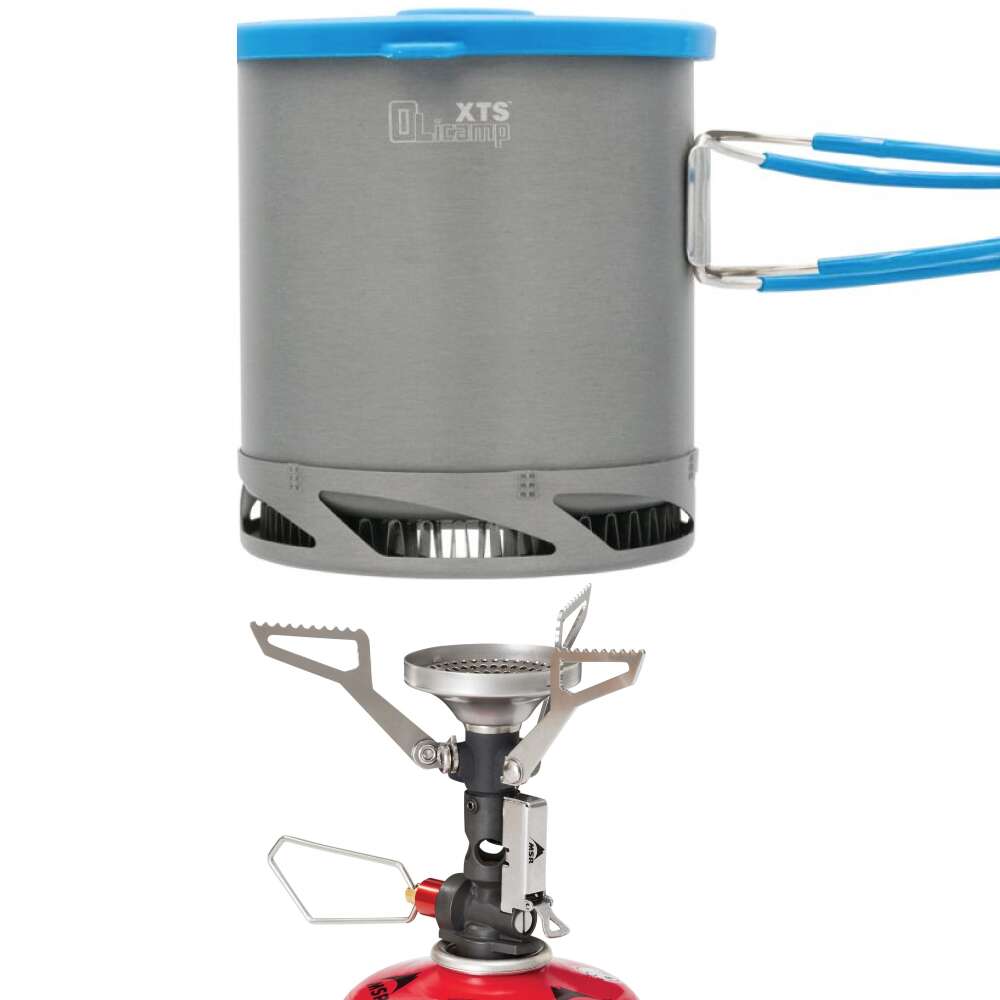
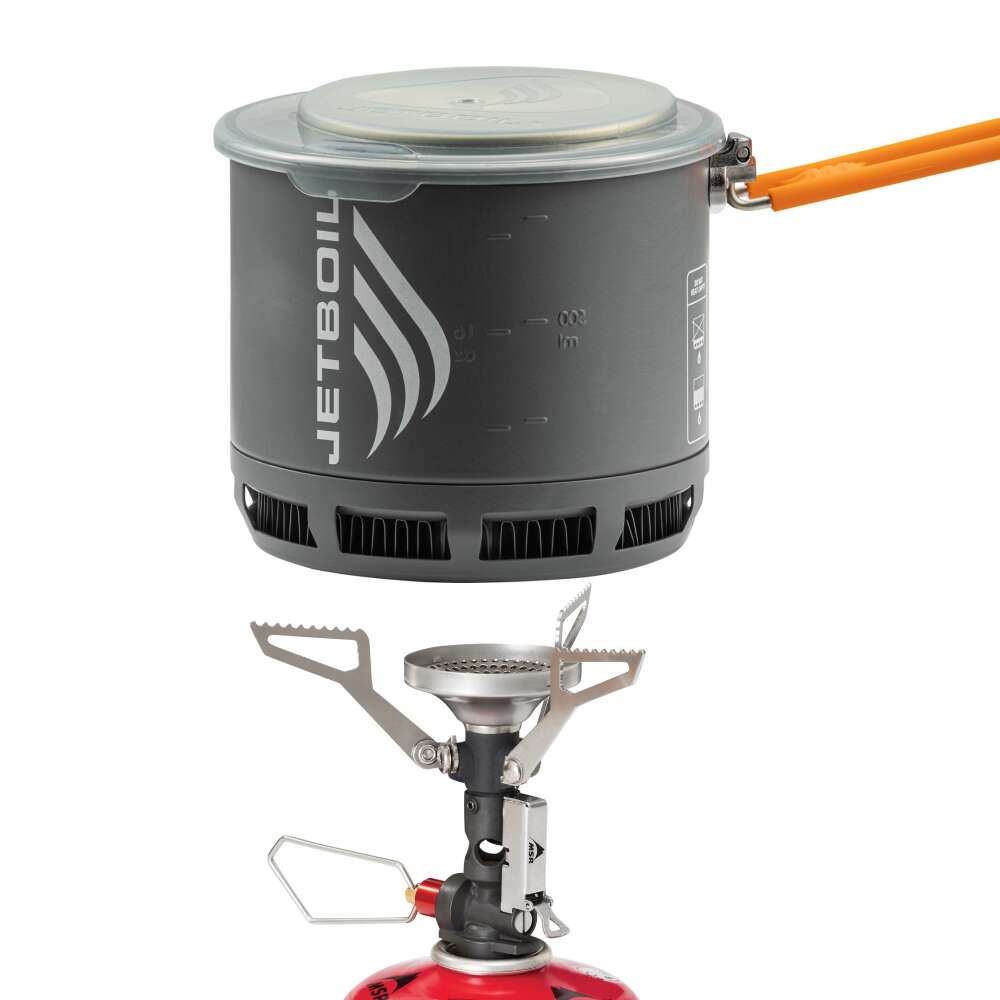

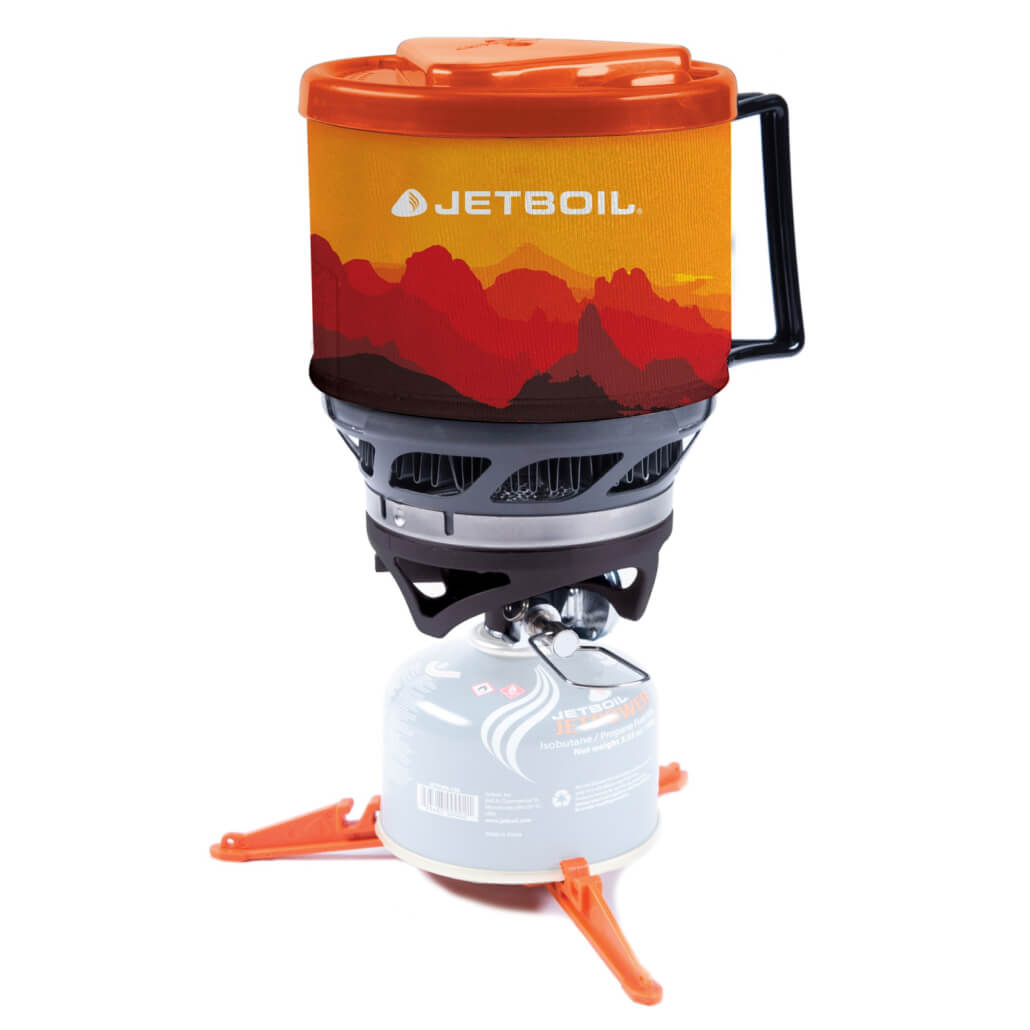


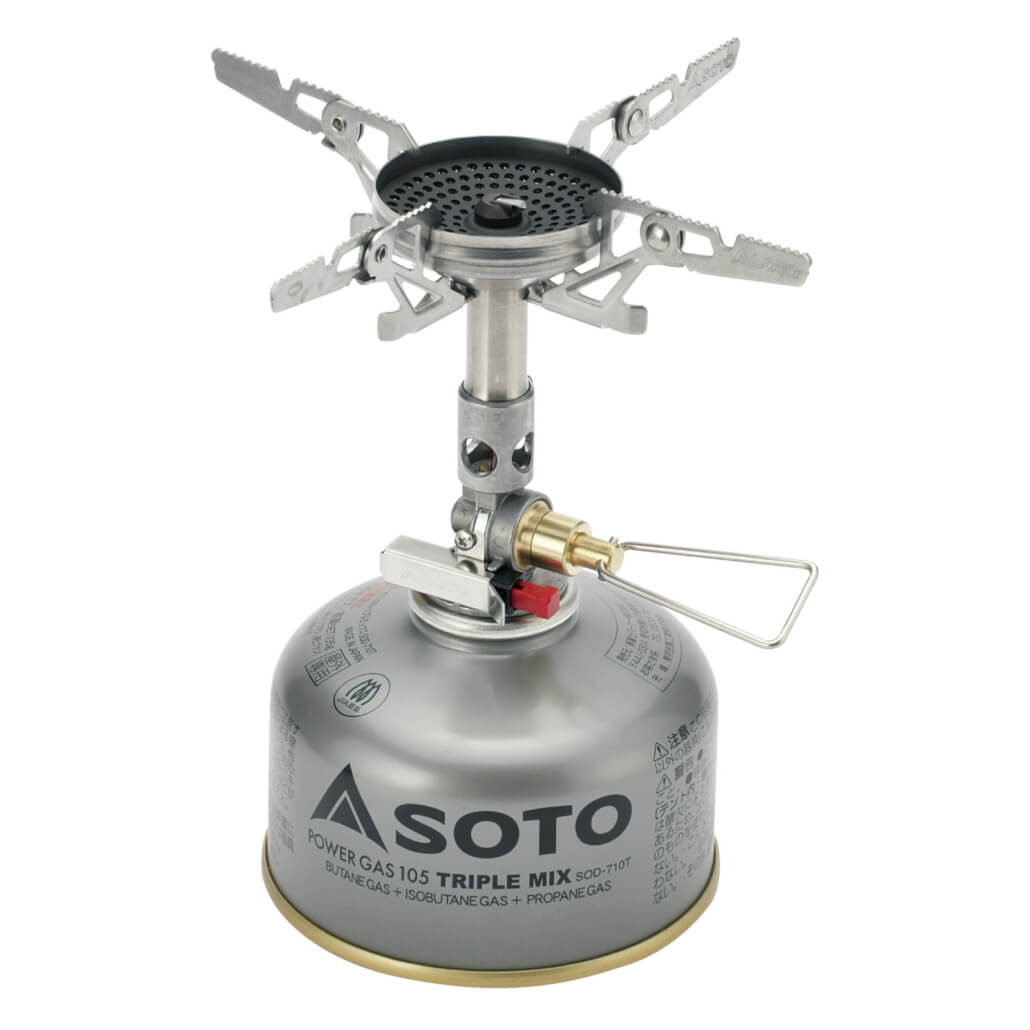
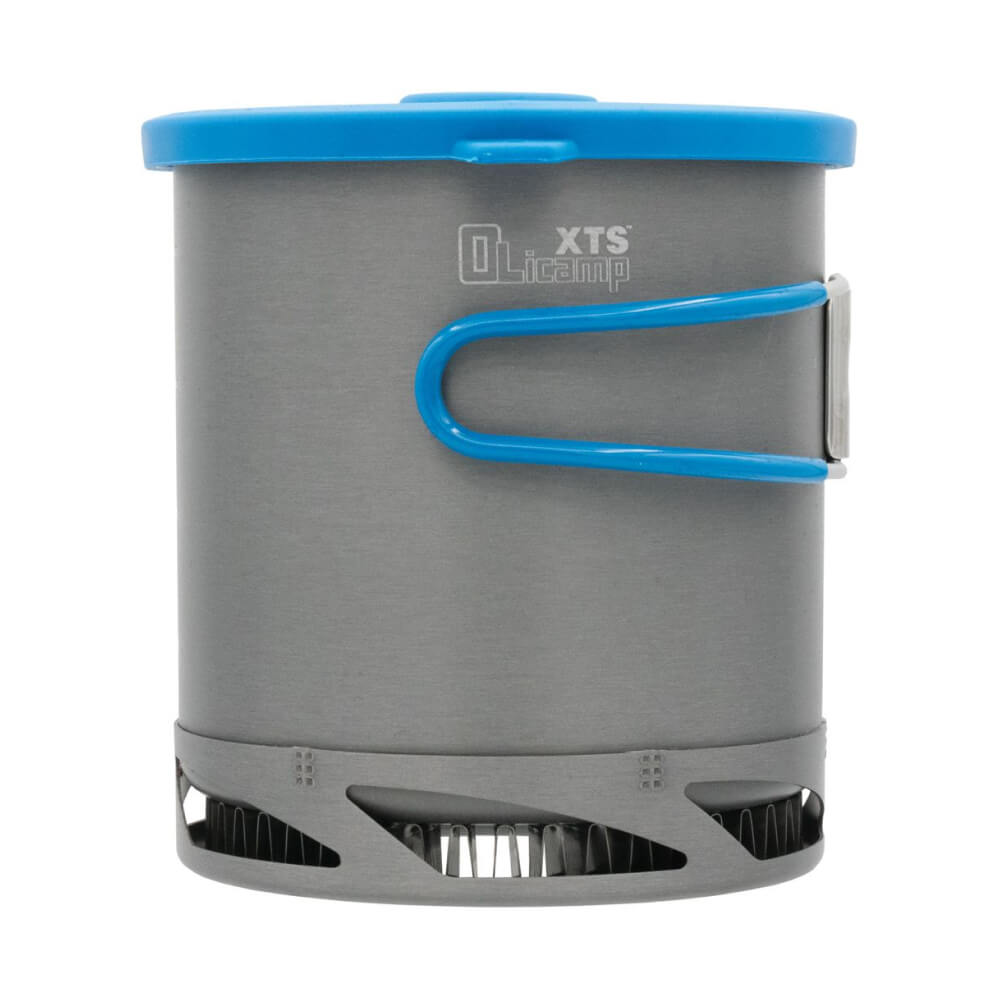
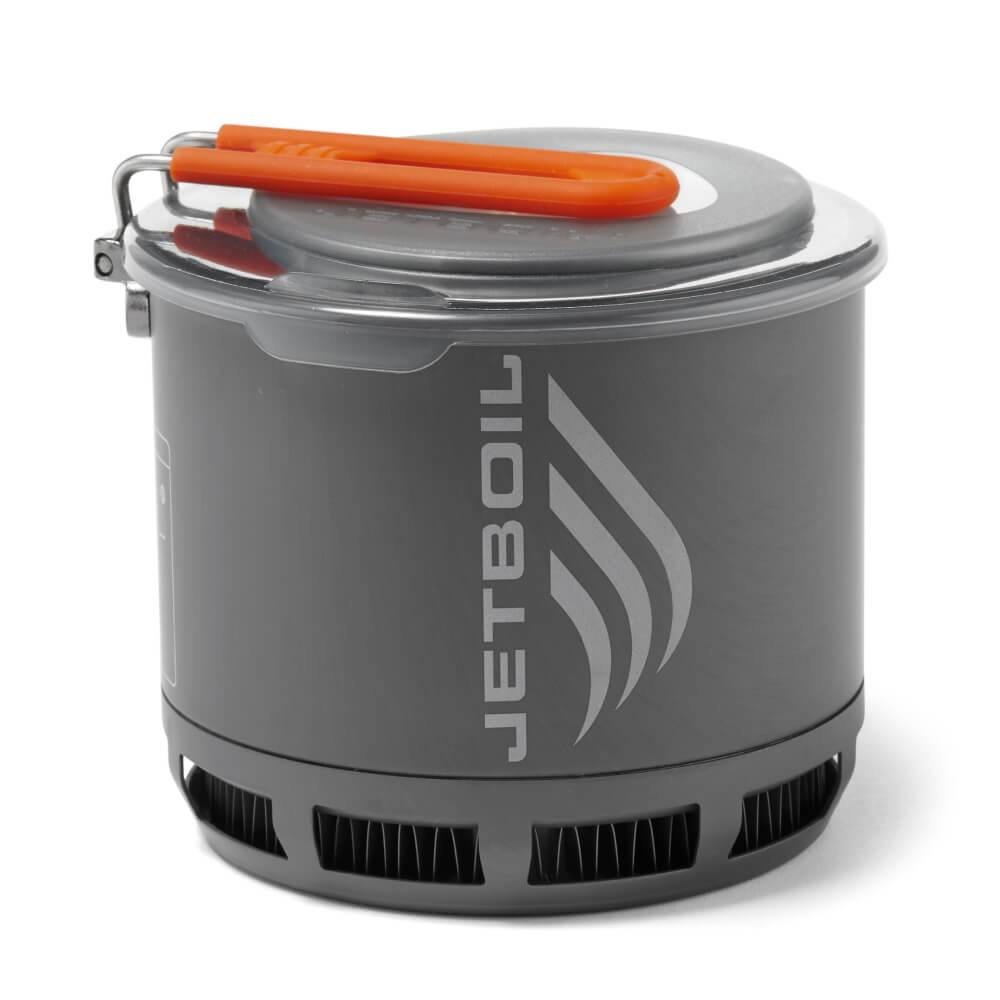
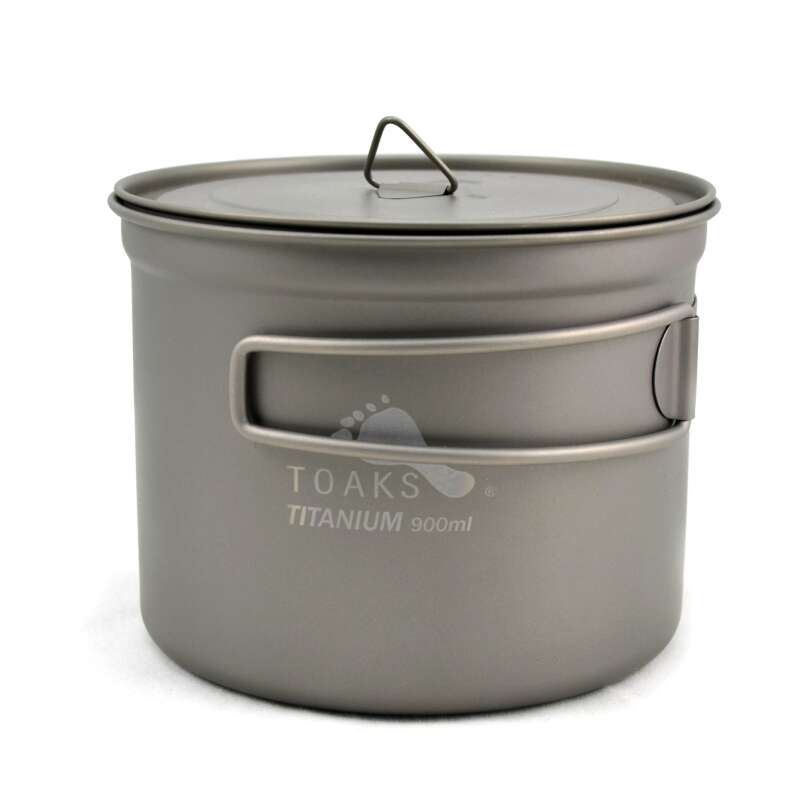
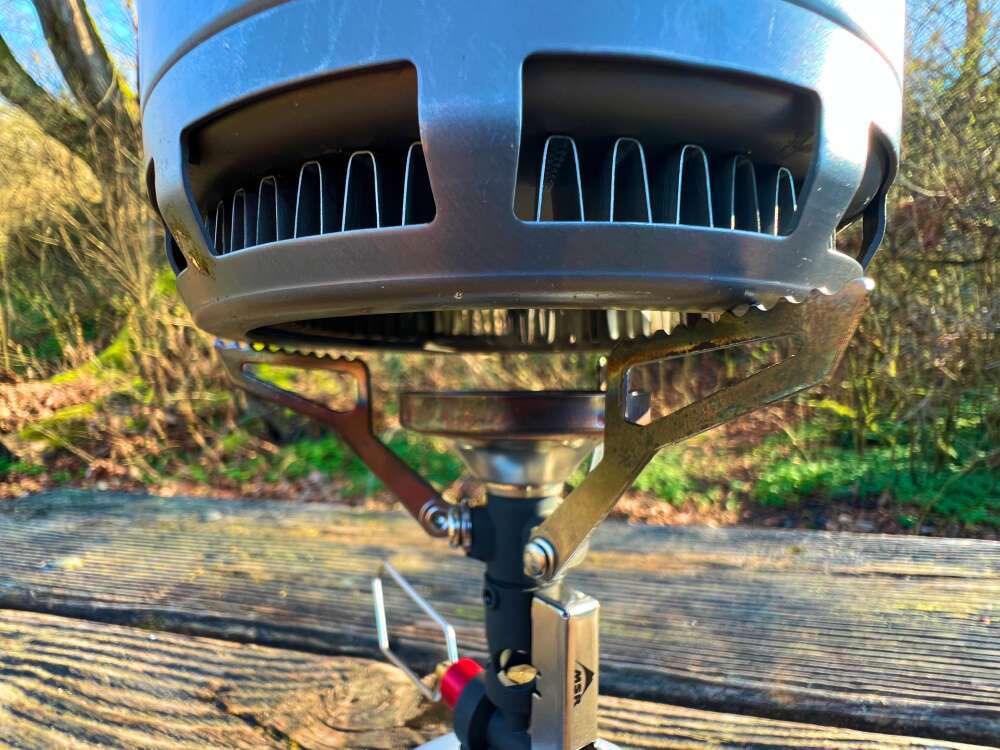
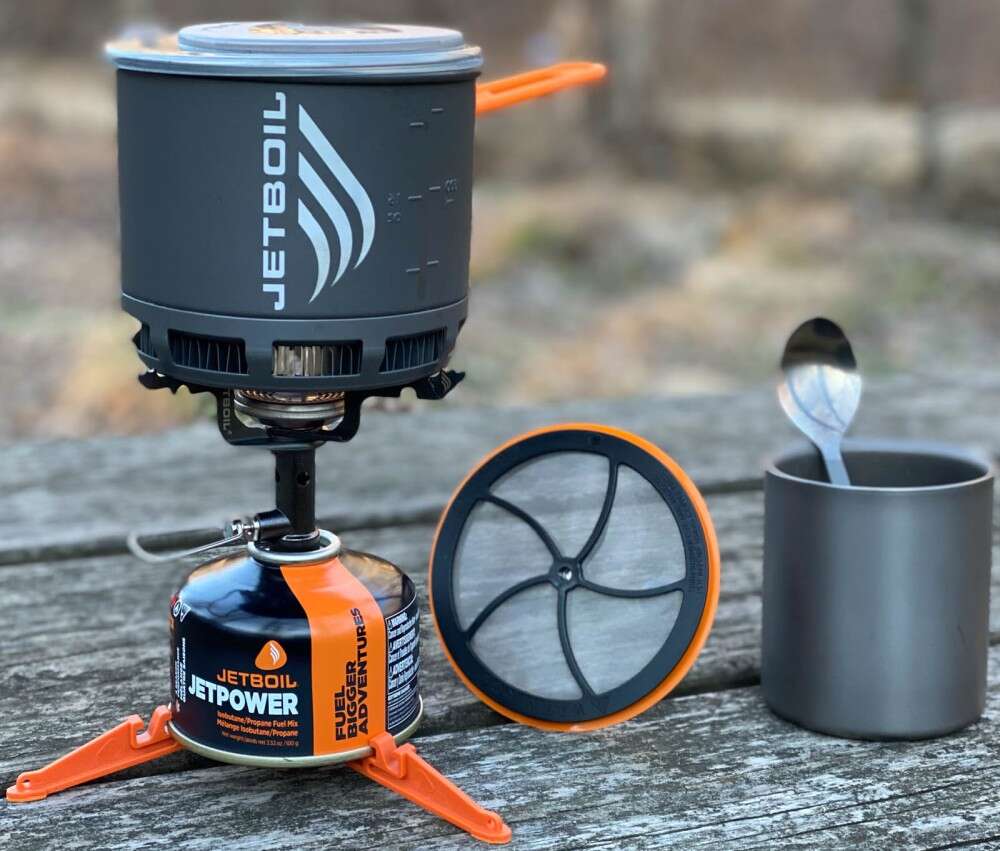
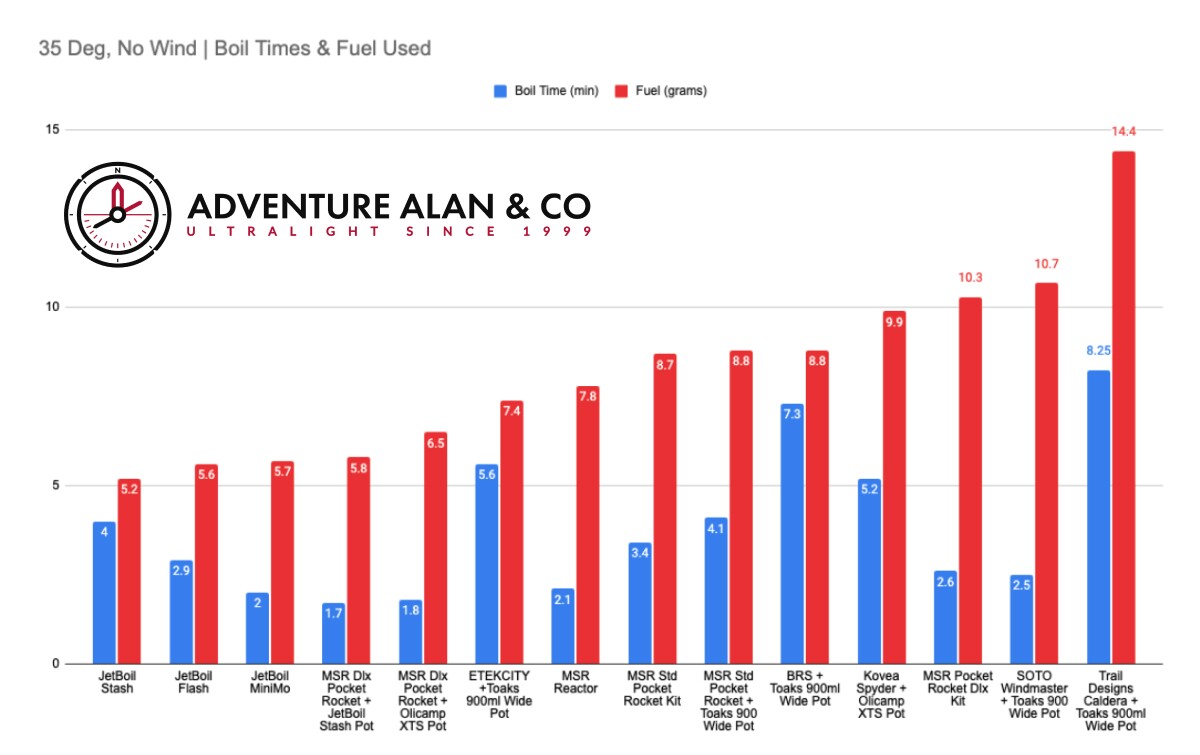
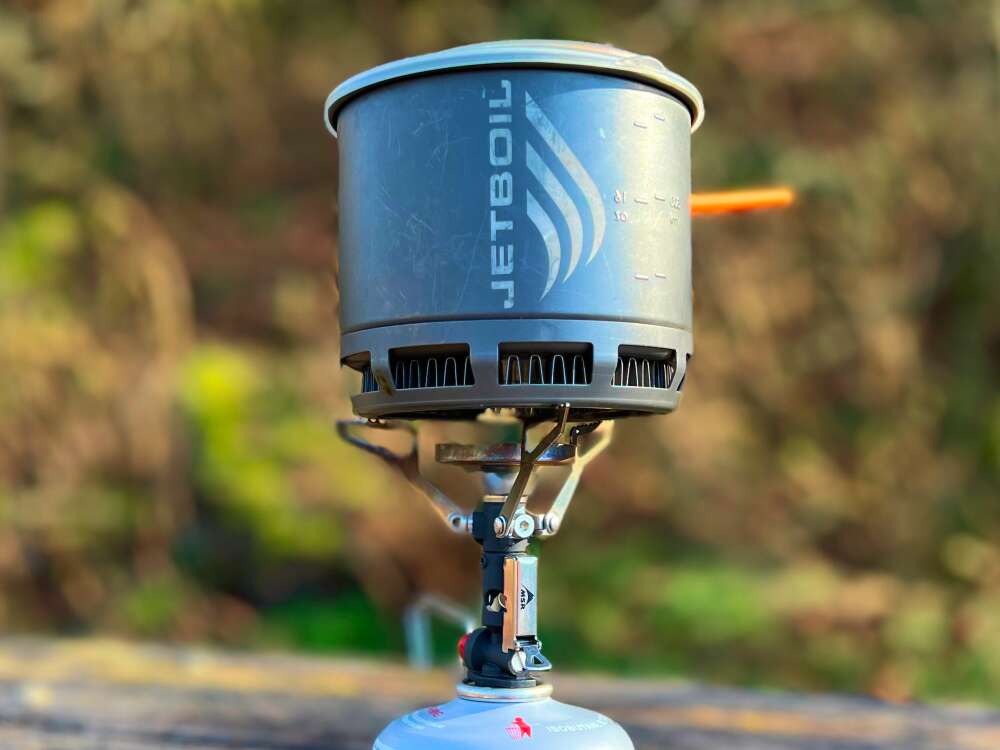


Share this entry